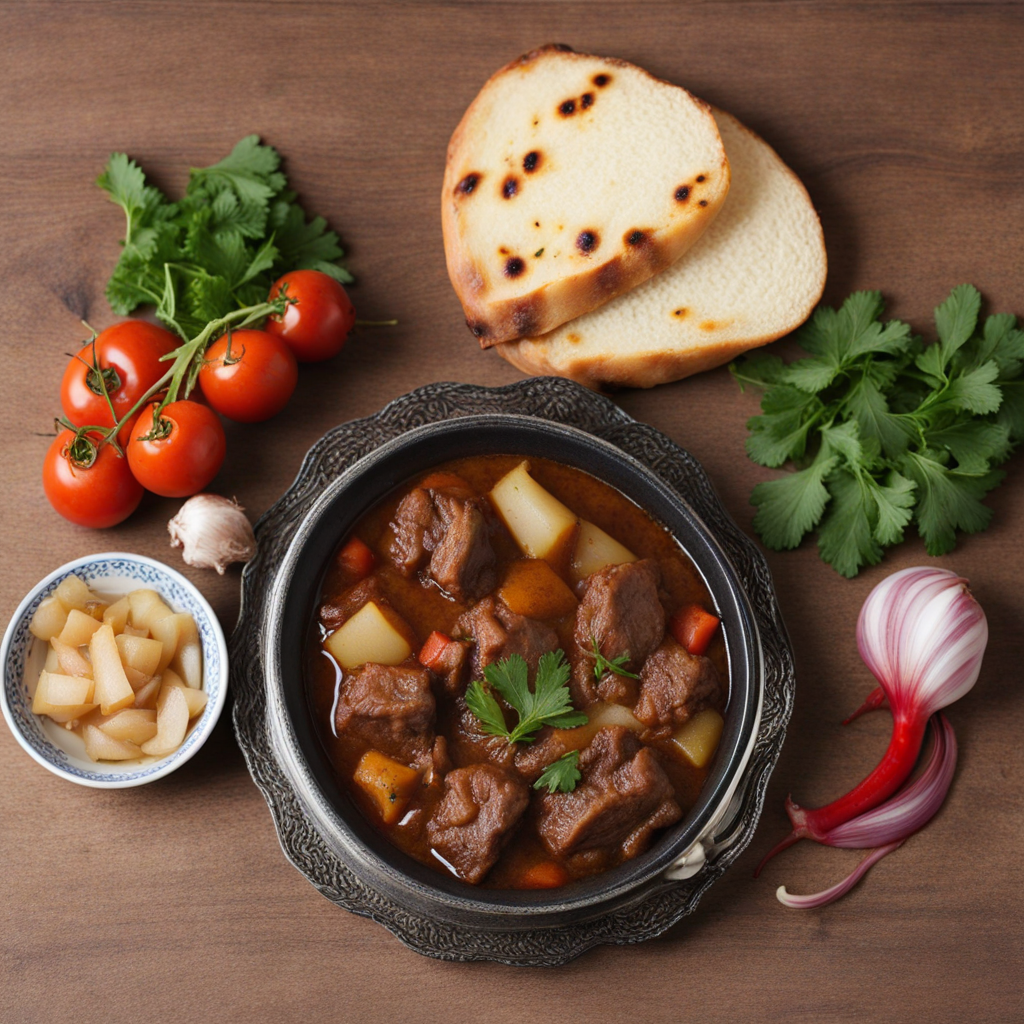Borani Banjan
Borani Banjan is a delightful Afghan dish that showcases the rich flavors and textures of eggplant, making it a standout option for anyone curious about exploring new culinary experiences. At its core, this dish features tender slices of eggplant that are either fried or baked until they achieve a luscious, melt-in-your-mouth consistency. The eggplant is then layered with a vibrant tomato sauce spiced with garlic, cumin, and a touch of turmeric, which adds depth and warmth to the overall flavor profile. Each bite offers a perfect balance of savory and slightly sweet notes, making it a comforting and satisfying addition to any meal. One of the most captivating aspects of Borani Banjan is the way it is served. Traditionally, the dish is topped with a generous dollop of cooling yogurt, often mixed with fresh herbs like mint or cilantro, which adds a refreshing contrast to the rich eggplant and tomato sauce. This combination not only enhances the dish's flavor but also provides a creamy texture that beautifully complements the other ingredients. The presentation is visually appealing, with vibrant colors from the eggplant, bright red sauce, and the white yogurt creating an inviting plate that beckons you to dig in. Whether served as a main dish or a side, Borani Banjan is often accompanied by fluffy Afghan bread or steamed rice, making it a versatile option for any occasion. The dish is not only a testament to the culinary traditions of Afghanistan but also a celebration of wholesome ingredients that come together to create a truly memorable taste experience. For those looking to expand their palate, Borani Banjan offers a unique and flavorful journey that is sure to leave a lasting impression.
How It Became This Dish
Origin of برانی بانجان برانی بانجان, also known as "Borani Banjan," is a traditional Afghan dish that highlights the rich culinary heritage of Afghanistan. Its roots can be traced back to the diverse agricultural practices of the region, where eggplants (banjan) are abundant. The dish primarily features layers of fried eggplant, often accompanied by a savory tomato sauce, garlic, and spices, making it a flavorful vegetarian option. The name "Borani" is derived from the Persian word "Borani," which refers to a dish made with vegetables and yogurt. This reflects the influence of Persian cuisine on Afghan cooking, as both cultures share a long history of culinary exchange due to geographical proximity and historical trade routes. The use of eggplant in Afghan cuisine can also be seen as a reflection of the country's agrarian lifestyle, where diverse vegetables were cultivated and cherished. \n\n Cultural Significance برانی بانجان holds a special place in Afghan culture, often served during family gatherings, celebrations, and religious occasions. It embodies the Afghan spirit of hospitality, where a variety of dishes are presented to guests as a sign of respect and warmth. The preparation and sharing of this dish can foster a sense of community, as families often gather to cook together, passing down recipes and techniques through generations. In addition to its role in family gatherings, Borani Banjan is also a staple in Afghan restaurants, showcasing the country's culinary traditions to a broader audience. Its popularity extends beyond Afghanistan, as Afghan diaspora communities around the world have introduced this dish to new cultures and cuisines, contributing to its evolving identity. The dish's vegetarian nature also makes it appealing to a diverse range of dietary preferences, further enhancing its relevance in contemporary dining. \n\n Ingredients and Preparation The primary ingredients of برانی بانجان include eggplants, tomatoes, onions, garlic, and a blend of spices such as cumin and coriander. The dish is typically prepared by first slicing the eggplants and frying them until they are golden brown and tender. This method enhances the natural flavors of the eggplant and adds a delightful texture to the dish. Next, a sauce is made from sautéing onions and garlic, followed by the addition of tomatoes and spices. This sauce serves as a flavorful base that complements the fried eggplant. The layers of eggplant and sauce are then assembled, often topped with yogurt or a sprinkle of fresh herbs before serving. This combination of ingredients reflects the balance of flavors that is characteristic of Afghan cuisine, where sweetness, acidity, and earthiness come together harmoniously. \n\n Regional Variations Over time, برانی بانجان has inspired various regional adaptations, reflecting local tastes and available ingredients. In some areas, for instance, additional vegetables such as bell peppers or potatoes may be included, while in others, spicier chili peppers are added for a kick. These variations highlight the dish's versatility and the creativity of Afghan cooks, who often adapt traditional recipes to suit their preferences and regional influences. Moreover, the influence of neighboring countries can also be seen in the preparation of Borani Banjan. For example, in Pakistan, a similar dish known as "Baingan Bharta" is popular, where roasted eggplant is mashed and mixed with spices. Such cross-cultural interactions contribute to the evolving landscape of Afghan cuisine and demonstrate how food can serve as a bridge between cultures. \n\n Historical Context and Evolution The history of برانی بانجان is intertwined with the broader narrative of Afghan history. Afghanistan has been a crossroads for various civilizations, including the Persians, Greeks, and Mughals, each leaving their mark on the country’s culinary practices. The introduction of new ingredients and cooking methods over centuries has enriched Afghan cuisine, with Borani Banjan serving as a prime example of this evolution. During the Soviet invasion in the late 20th century and the subsequent civil war, Afghan cuisine, including dishes like برانی بانجان, became a means of preserving cultural identity amidst turmoil. Many Afghans sought refuge in other countries, taking their culinary traditions with them. As a result, Borani Banjan not only became a dish of nostalgia for those in exile but also a means of connecting with their roots and sharing their culture with new communities. \n\n Contemporary Popularity In recent years, برانی بانجان has gained popularity in the global food scene, often featured in food festivals, cultural events, and international restaurants specializing in Middle Eastern and Central Asian cuisine. The rise of vegetarianism and veganism in many parts of the world has further propelled the dish into the spotlight, as it offers a delicious and satisfying alternative to meat-based meals. Social media platforms have also played a significant role in bringing attention to traditional dishes like Borani Banjan. Food bloggers and influencers have shared recipes and variations, encouraging a younger generation to explore and appreciate their culinary heritage. This newfound interest has sparked a revival of traditional cooking practices, as more people seek to reconnect with their cultural roots through food. \n\n Conclusion برانی بانجان is more than just a dish; it is a symbol of Afghan culture and resilience. Its rich history, cultural significance, and evolution over time reflect the complexities of Afghan identity and the enduring power of food to connect people across generations and borders. As the world continues to discover and celebrate the diversity of global cuisines, Borani Banjan stands as a testament to the beauty and richness of Afghan culinary traditions.
You may like
Discover local flavors from Afghanistan







